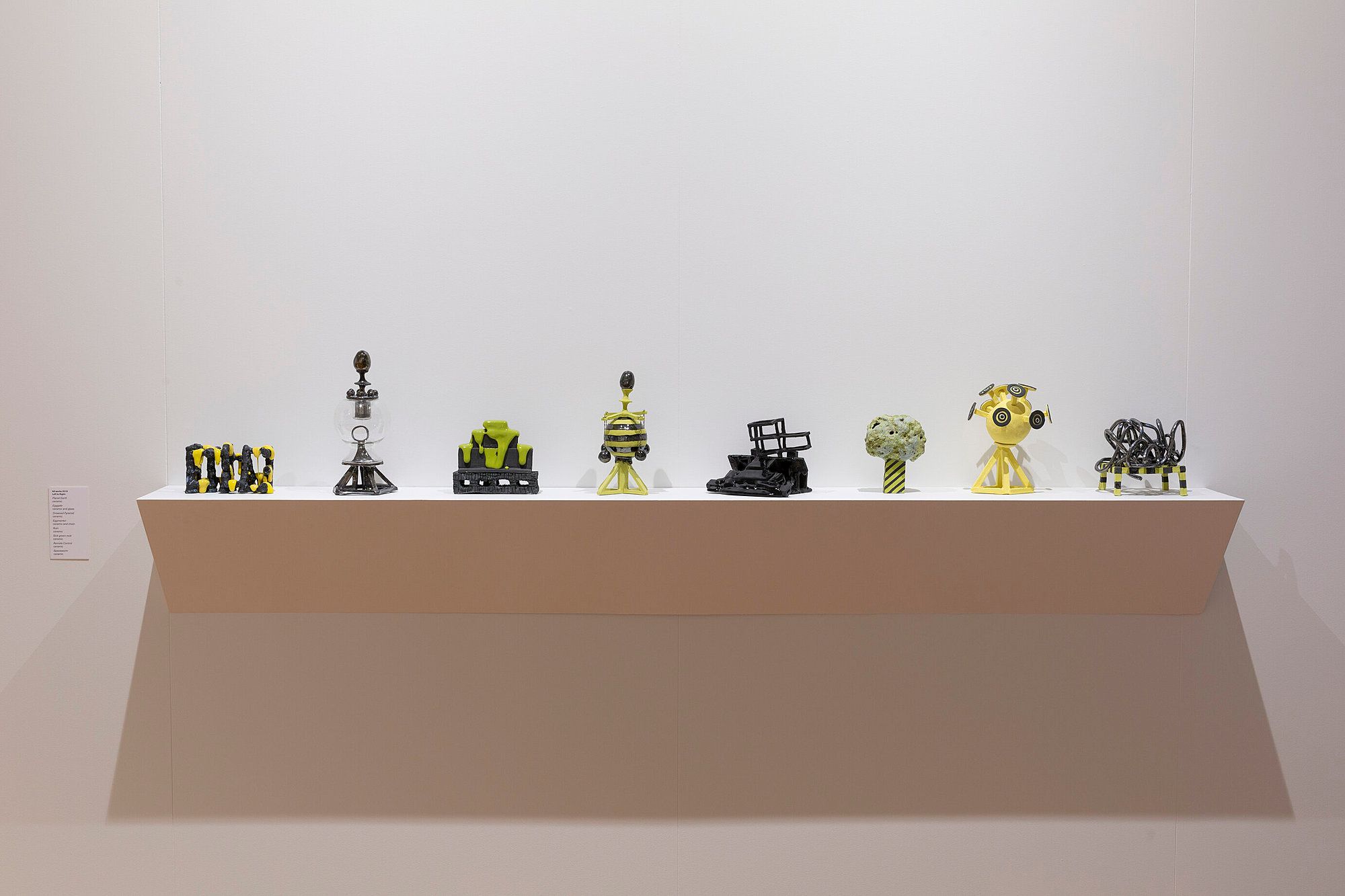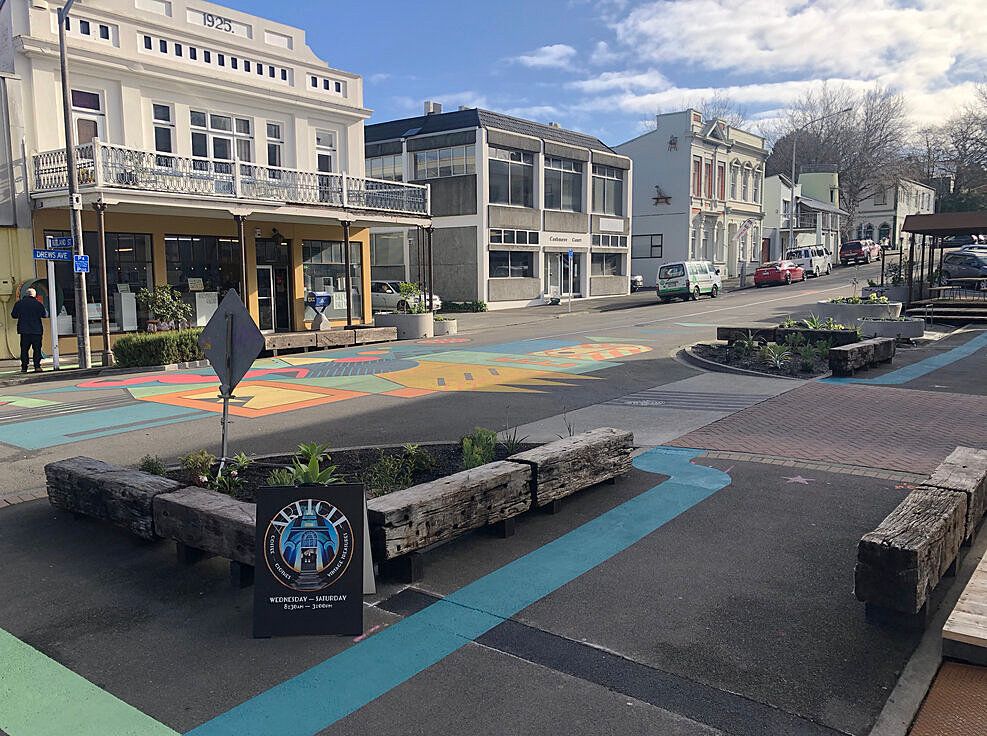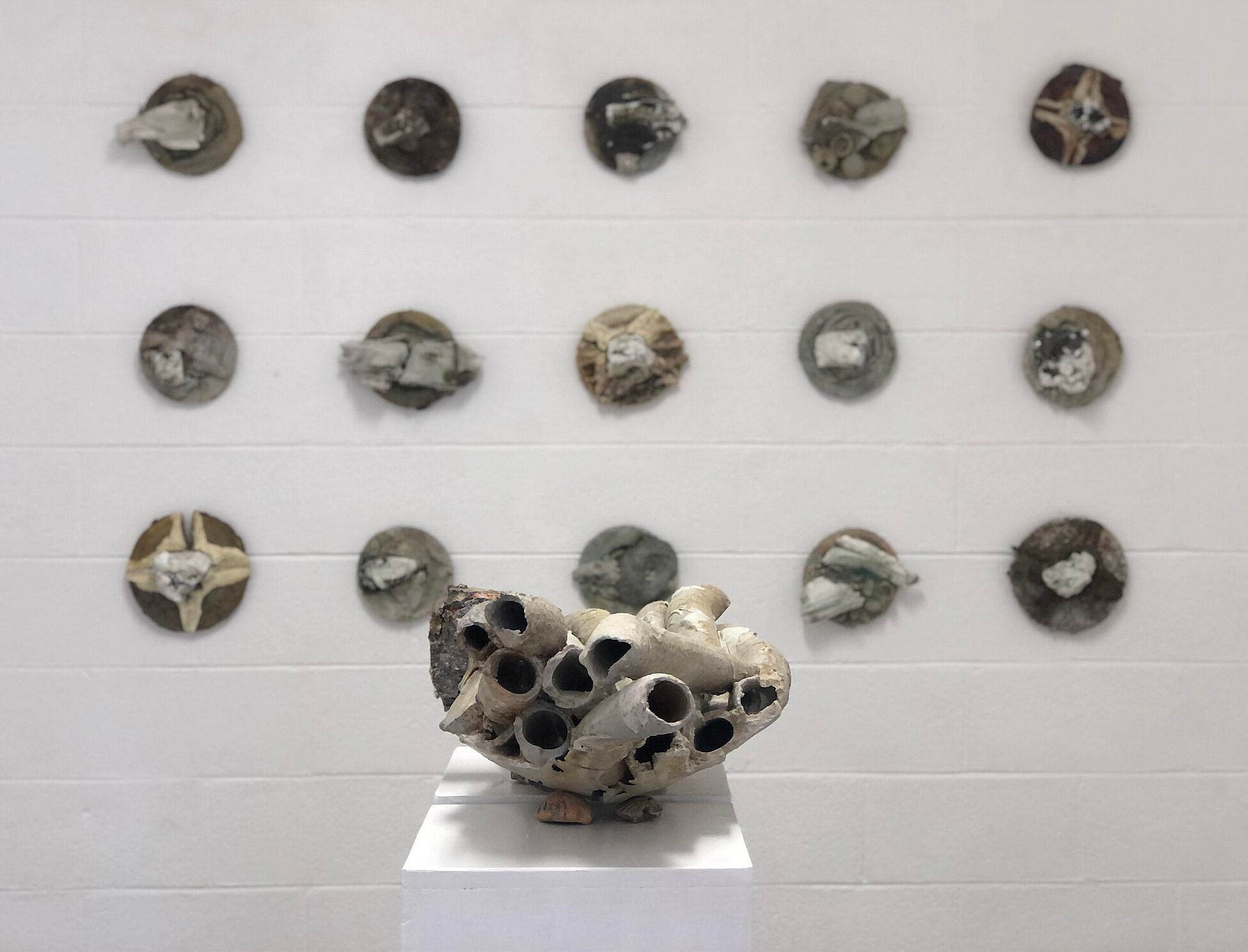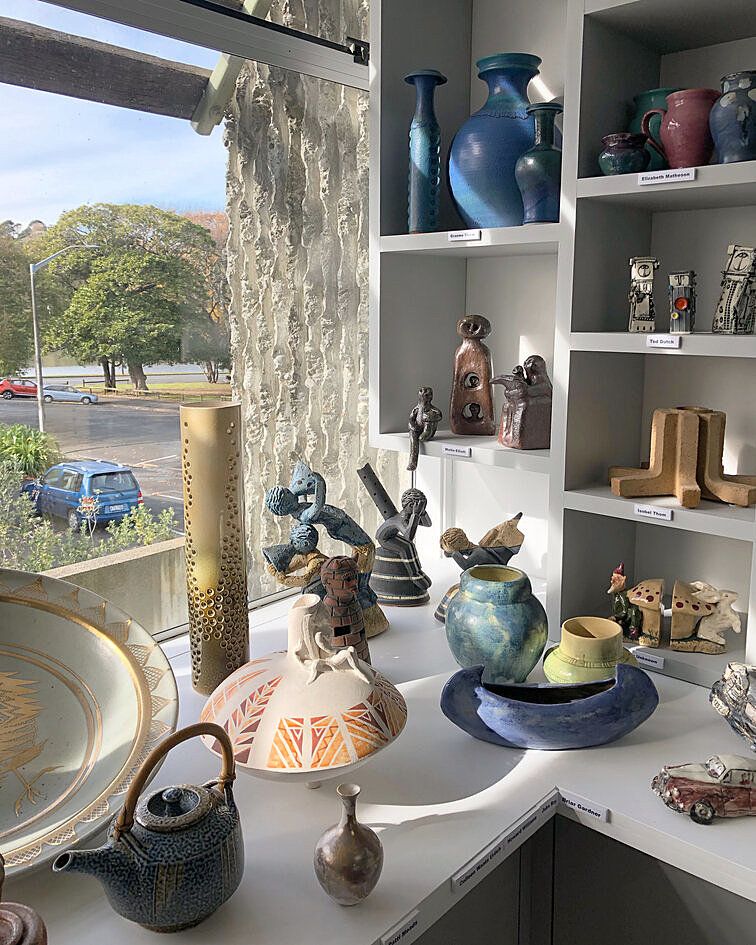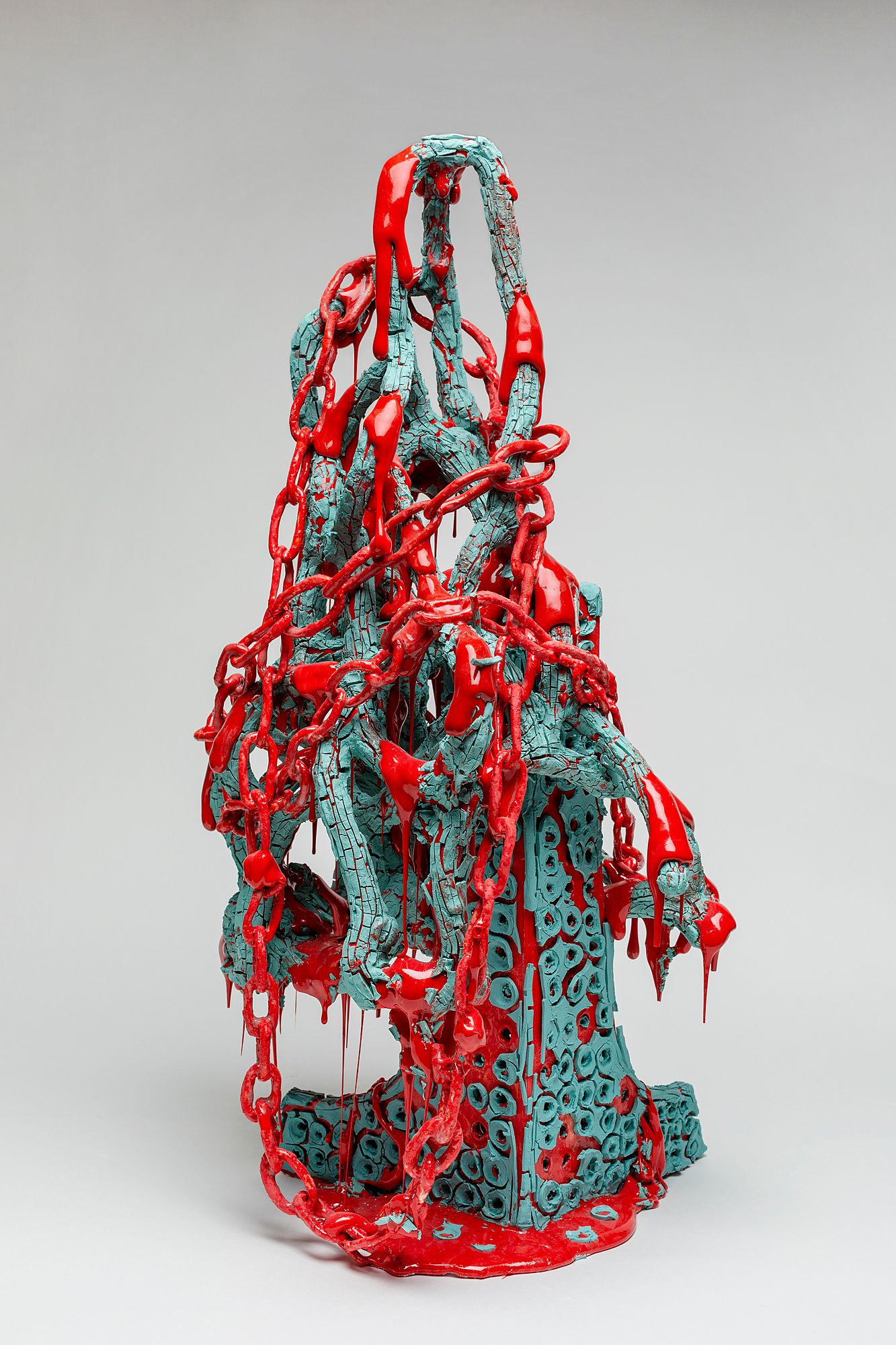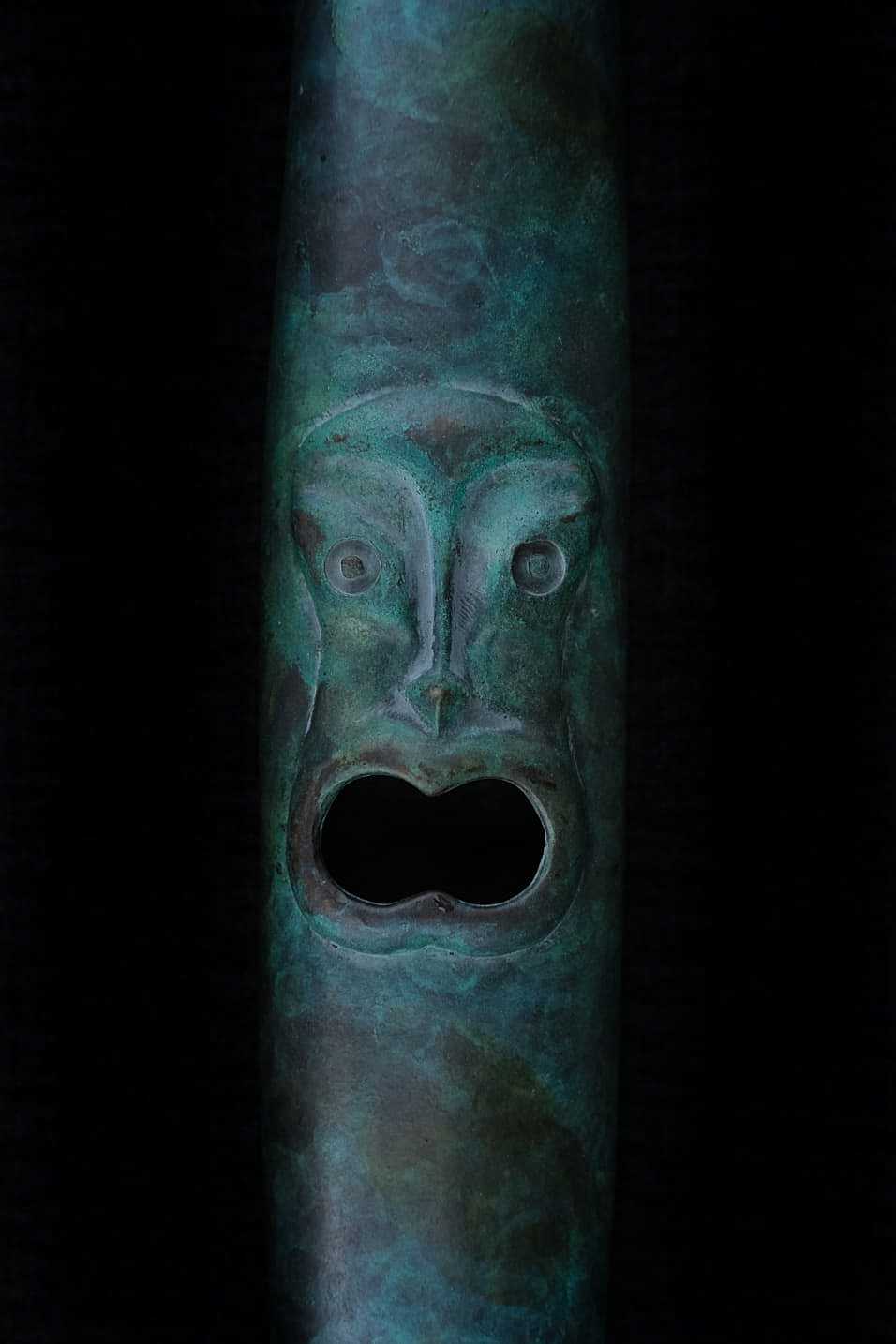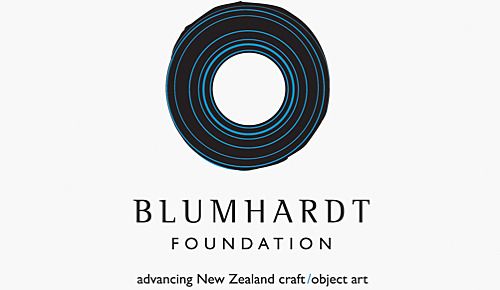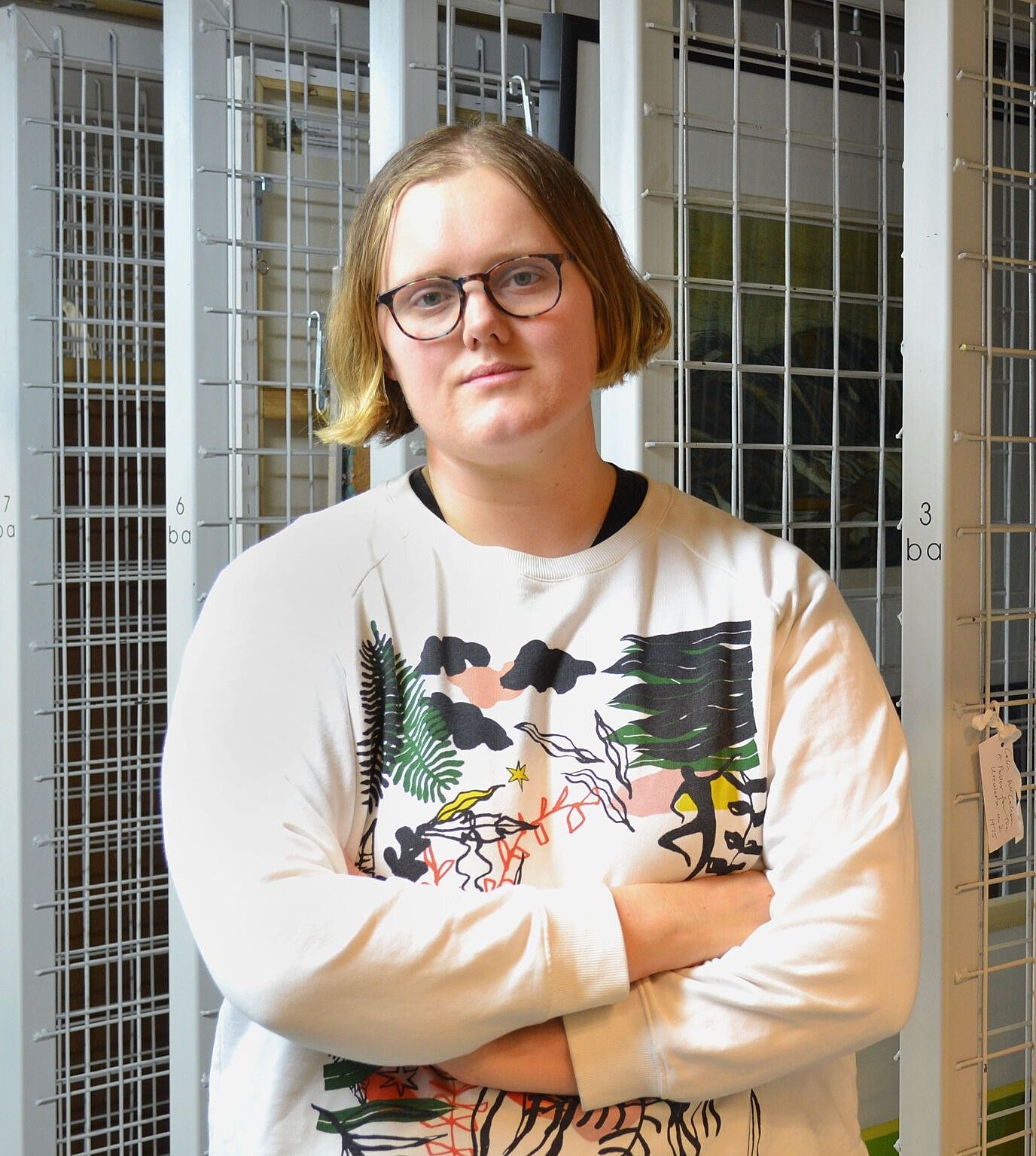The Centre of My Universe: Craft in Whanganui
Milly Mitchell-Anyon synthesises the threads that weave together Whanganui’s community of makers and arts leaders, today and in the past.
“What is the centre of your universe?” Nina Tonga, Curator of Contemporary Art at Te Papa, asked this question during a talk I attended in 2019. It’s a question that I keep returning to because, for me, it immediately conjures the same answer every time: Whanganui is the centre of my universe.
As one of the Blumhardt Foundation’s 2021–2022 Curators, my role is to advance the craft and object art sector in Aotearoa. So it feels serendipitous that I am based here in Whanganui for the duration of this role, given the city’s long-standing commitment to craft. Many practitioners are based in Whanganui, but it’s not possible to talk about them all here. Instead, I want to talk about how the historical underpinnings of the craft community have contributed to the practices of the craft and object artists based here in Whanganui.
As a region, our crafting identity is indebted to taonga tuku iho – knowledge passed down through generations. A recent visit to the Whanganui Regional Museum reminded me of this. When I was a child, I would visit the museum just to see the hīnaki. As a keen fisher, I was obsessed with the number of tūna each bulbous net might catch. I imagined each hīnaki in the cabinets once billowing in the water as it slowly filled with tūna – reminding me of the ambitions I had for the crab pots I used to put out with my dad in the awa.
It feels serendipitous that I am based here in Whanganui, given the city’s long-standing commitment to craft
More recently, as a Collections Assistant, I was taking the hīnaki off display during earthquake strengthening of the museum, and it was only then that I really looked at how the nets were made. Today, Whanganui Regional Museum’s Kaitiaki Taonga Māori, Āwhina Twomey, invites weaving students into the collection to learn different weaving methods and styles specific to the region by looking at the taonga held there. Actively using the collection as a link between the past and present ensures that the craftsmanship is translated through to future generations.
Whanganui District Council’s Heritage Advisor, Scott Flutey, notes that by 1892 Whanganui had become the fourth city in Aotearoa New Zealand to establish an arts school. Coinciding with this, there was “funding to travel to all surrounding settlements in the Whanganui region and teach regular classes – art and design were made equally accessible in rural areas.” An Arts and Crafts Society soon followed in 1901, which had a significant influence on the milieu of the town. The Sarjeant Gallery Te Whare o Rehua, the Whanganui Technical School of Design and the Arts and Crafts Society transformed Whanganui into a ‘creative hub’ to rival the other main centres at the turn of the century. Whanganui, therefore, can be situated historically within a context of a long-standing tradition of craft and object art. That legacy exists for us to draw on today.
Drews Avenue Precinct. Courtesy of the author
One of the key factors for sustaining a community that values craft is the support of institutions like the Sarjeant Gallery Te Whare o Rehua. Since the 1970s, the Sarjeant has amassed a large collection of ceramics from local, national and international artists. This institutional support for the community is reiterated through programmes like the Tylee Cottage residency, which has recently begun offering a dedicated residency for craft and object artists. The value of a programme like this is two way. Not only does it support artists financially to focus on their practice, but it also allows these practitioners to embed themselves within the community. Previous craft and object artist residents include Bronwynne Cornish, Lauren Lysaght, Andrea du Chatenier, Emily Valentine, John Roy, Cobi Cockburn and Charles Butcher, Alexis Neal, Erica van Zon, Wendy Fairclough, Kate Fitzharris, Annie Mackenzie and, most recently, Matthew McIntyre-Wilson.
This relationship between the residency and the craft community is exemplified by jeweller and weaver McIntyre-Wilson’s (Taranaki, Ngā Māhanga, Tītahi) Tylee Cottage project. The project involves weaving hīnaki like the ones held in the museum, using the aerial roots of the kiekie vine, with help from weaver and kaiako Maehe Ranginui (Te Āti Haunui-a-Pāpārangi), who helped source materials. Ranginui has whakapapa connections to Ātene Marae and was taught by his grandfather how hīnaki were made using the aerial roots of the kiekie vine. These connections and collaborations come about because of these residencies.
Matthew McIntyre-Wilson, Pēke mou tuna at Hiruharama
A major driver of craft infrastructure and institutional support in the community was John Scott (Ngāi Tahu). He was appointed as the first CEO of Wanganui Regional Community Polytechnic in 1983 (later merged into UCOL). Scott saw the advantage of doubling down on craft and object art as an identity for the arts community in Whanganui. In 1986, he set up the Craft Design course, in which students learned the basics of crafts like ceramics, leatherwork, weaving, felting, papermaking and glass. This course was part of Scott’s deep engagement with the craft and object sector in Aotearoa more broadly, as he served as the President of the Craft Council of New Zealand from 1987 until 1992. In 1990, the Pacific Fibre Symposium was held at the polytech, and the Wanganui Wood Symposium was held in conjunction with the Sarjeant Gallery that same year. Strengthening Whanganui’s alignment to craft was no coincidence, but it took co-ordination and co-operation to synthesise the crafting ecosystem. Whanganui was the place to be.
John Scott also established Whanganui’s Summer School of the Arts in 1986, which was launched to take advantage of the polytech’s empty facilities during the summer holidays. These summer schools proved popular, and attracted both local and national participants. When I asked a group of local artists who they remembered teaching some of classes, the answer was artists like Malcolm Harrison, Chris Weaver, Gary Nash, Owen Mapp, Marti Vreede, Wi Taepa, George Kojis, Kobi Bosshard, Craig McIntosh, Mark Lander, Tony Kuepfer, Claudia Borella and David Traub. The summer schools ended after Scott left the polytech in the mid-1990s, but were reinstated for a brief period in the 2000s.
Over the years, a number of glass artists have made Whanganui home
It is the physical and intangible infrastructure put in place by previous generations that has contributed to the craft and object art community today. In the 1980s, when Whanganui’s glass school was first set up, then-tutor Tony Kuepfer observed: “We’re the only craft design course with a hot glass workshop … There’s equipment here that’s unique.”1 Jenny Pattrick writes that John Scott was “thoroughly conversant with the history and evolution of the new craft design course and [was] committed to its success within his college. That this relatively small college has been able to build a coveted hot glass facility is evidence of this commitment.”2 Since then, the glass course has undergone a number of changes over the years, including being merged into UCOL before then being briefly closed by the provider because the course was financially ‘unviable’. Yet glass in Whanganui lives on. The glass school was taken over by the Whanganui District Council in 2007 and exists now in partnership with UCOL and New Zealand Glassworks – Te Whare Tūhua o Te Ao.
Over the years, a number of glass artists have made Whanganui home. Emma Camden and her partner David Murray moved here in 2000. After searching for a house around the country, they found that Whanganui was the cheapest place to live. The pair live in a former Freemasons Lodge, which was sold to them by potter Ross Mitchell-Anyon, also the author's uncle. According to Emma, “Ross had this vision to bring us here because we both had international careers. His idea was to show arts students in Whanganui that you could function as a successful artist here, just as well as in the big cities.” The pair have undoubtedly demonstrated that it is possible to live in the regions while showing internationally. Emma was the first New Zealander to win the prestigious Ranamok Glass Prize in 1999, with the next New Zealander to win it being her partner David in 2003.
New Zealand Glassworks Te Whare Tūhua o Te Ao. Courtesy of the author
New Zealand Glassworks Te Whare Tūhua o Te Ao. Courtesy of New Zealand Glassworks Te Whare Tūhua o Te Ao and Steve Caudwell
The ceramics community in Whanganui was also bolstered by prominent practitioners who taught or trained here, or relocated to Whanganui. In the 1970s, Peter Masters emigrated from England and came to Whanganui to be Head of Ceramics at the technical college, and in the 1980s George Kojis was invited by John Scott to teach at the polytech. Ross Mitchell-Anyon, a potter, also taught at the polytech. Sian van Dyk notes that Ross was influential in teaching several noted younger ceramic artists, including Paul Maseyk and Martin Poppelwell; she adds that he was also a “significant contributor to the city’s creative reputation … His home became a gathering place for the artistic community, where he and his wife Bobbi hosted many parties.” Another ceramics incubator is the Whanganui Potters’ Society, conceived by Agnes Smith in 1975. Now Whanganui Potters’ Studio, it still holds regular classes for the community that command long waitlists. Many renowned potters have taught there, and it has been a constant in the ceramics history of Whanganui.3
While there has been plenty of support from institutions, there is also a dedicated group of artists like Paul and Mark Rayner; they established their own ceramics-orientated space, the Rayner Brothers Gallery, in 2008. Paul had previously worked on exhibitions for Te Papa Tongarewa, then at the Sarjeant as a curator. The pair have since relocated their gallery and established the Glasgow Street Art Centre Artist in Residence Programme, which is designed to offer short residencies with an apartment and studio, for artists wishing to come to Whanganui to immerse themselves in their practice.
Another major asset to the community here in Whanganui is the Quartz Museum of Studio Ceramics, privately run by potter Rick Rudd and the Rick Rudd Foundation. Quartz boasts an extensive, near-encyclopedic collection of studio ceramics from Aotearoa New Zealand. Rudd is interested in the preservation of the national ceramics history of Aotearoa, and fostering the next generation of clay artists by creating awards like the Emerging Practitioner in Clay Award.4 Ceramics collector Simon Manchester (1958–2019) recognised the significance of Rudd’s endeavour, bequeathing his entire collection to the foundation.
Darryl Frost, Quartz Museum of Studio Ceramics. Courtesy of the author
Quartz Museum of Studio Ceramics. Courtesy of the author
Support from local government for craft and object art in Whanganui waxes and wanes. When Michael Laws became the Mayor of Whanganui, canning the Sarjeant extension was one of his policy platforms – which he was initially successful in doing. Fortunately, the funds have since been re-raised, and the redevelopment is due to be completed in 2023.
Artist Andrea du Chatenier originally came to Whanganui as a Tylee Cottage resident in 2003 and then decided to stay. She now teaches at UCOL and continues to expand her practice. In 2018 she undertook a residency at the International Ceramic Research Centre in Denmark, then another at the Vermont Studio Centre in the United States in 2019. Potter Aaron Scythe trained in Australia but moved to the Japanese town of Mashiko in 1996, where hundreds of potters live and work. Scythe and his family relocated to Whanganui in 2011 after the Fukushima Daiichi nuclear disaster occurred close to his home in Mashiko.
Andrea du Chatenier, Eigenleben, 2020. Courtesy of Sarjeant Gallery Te Whare o Rehua Whanganui
Andrea du Chatenier, Spectre, 2020. Courtesy of Sarjeant Gallery Te Whare o Rehua Whanganui
However, it is undeniable that socioeconomic factors have also led to Whanganui becoming a hub for artists. A few years ago, Whanganui was labelled a ‘zombie town’ by economist Shamubeel Eaqub, due to the year-on-year declining population and dwindling employment opportunities. This is one reason that there has been, until very recently, comparatively cheap housing as well as heritage buildings available for purchase in Whanganui. For artists, the upside to the stark economic reality of the ‘zombie town’ was that housing and studio space were more affordable if you were an artist, either to rent or to buy. It was possible to do more than just survive here. Pantograph Punch Editor Ataria Sharman also speaks to this in her piece on housing affordability. However, in March 2020, Whanganui marked its first million-dollar house sale, and is increasingly seeing month-on-month rises in property prices along with a decline in housing availability, which poses a problem not just for the arts community but all renters in the region.
She told me that “moving to Whanganui has given me a sense of security and stability"
Rani Stigsdottir, a jeweller who uses the nom de plume Banshee the Valkyrie, moved to Whanganui in 2019 because of housing affordability compared to Wellington. For Rani, the ability to buy a house that had enough space for a studio for both her and her partner David, a musician, was one of the main motivations for moving here. Since coming to Whanganui, Rani has worked as a full-time jeweller, oscillating between her job as an apprentice goldsmith/bench-hand and her own jewellery practice. She told me that “moving to Whanganui has given me a sense of security and stability. I am starting to think more long-term about my practice.”
For Whanganui-based jeweller Frances Stachl (Ngā Puhi, Te Āti Awa), craft is about the love of making, the skilled workmanship it entails, and the relationships between people that those works can bridge. In 2017 Frances invited members of the community to submit an object to her, and she responded by making a piece of work. At the Sarjeant, the exhibition Fiction in the Space Between saw Stachl respond to 51 participants’ stories by fastidiously making hundreds of objects. I love the piece of jewellery that Frances made from my object – it’s a deeply personal piece, and it makes me feel joyous every time I wear it. For Stachl, making is sometimes utilitarian, often sentimental, but always personal. Frances recently talked to Pantograph Punch Editor, Ataria Sharman.
Author with necklace and bracelet made by Frances Stachl for the exhibition Fiction in the Space Between. Courtesy of Sarjeant Gallery Te Whare o Rehua Whanganui
A final example drawn from among the many artists currently active in Whanganui (only a few of whom I mention here) is sculptor and musician Tom Carroll (Ngāti Maru, Hauraki). Inspired by receiving his whakapapa from his paternal grandmother, Fern Rutherford, while living in Melbourne, Tom moved back to Whanganui to develop his taonga pūoro practice: “I relocated to my hometown of Whanganui to pursue my developing interest in Māori music, and seek connections in the taonga pūoro community.”5 There is only one place you can do that in the world, and that’s home: the centre of your universe. Last year, I was able to see Tom’s bronze pūtōrino Wahangū. The patinaed instrument is exceptionally beautiful, but as the name connotes, it is a silent taonga pūoro. Artists like Tom are the reason that craft and object art in Whanganui is so exciting.
Thomas Carroll, Wahangū. Courtesy of the artist.
I am privileged to be from a family of artists and craftspeople, so my understanding has been shaped by my experiences growing up within the community in Whanganui. The centre of my universe is here, at home. There is no way to synthesise all the threads that weave together these strands within the community. I do see that Whanganui has been lucky to be the benefactor of decisions made in the past, by leaders who have ensured our voice remains true to craft through investing heavily in the idea that we are a community of makers.
1Jenny Pattrick, “Wanganui Regional Community College – A Harmonious Whole,” New Zealand Crafts 23 (Autumn 1988): 13.
2 Ibid, 14.
3 Milly Mitchell-Anyon, “A Short and Recent History of Ceramics in Whanganui,” Ceramics New Zealand 2, no. 2 (Spring/Summer 2019): 27.
4 Ibid, 30.
5 Ibid, 30.
*
This piece is presented as part of a partnership with Blumhardt Foundation. They cover the costs of paying our writers while we retain all editorial control.
Feature image: Andrea du Chatenier's Eigenleben. Courtesy of Sarjeant Gallery Te Whare o Rehua Whanganui
